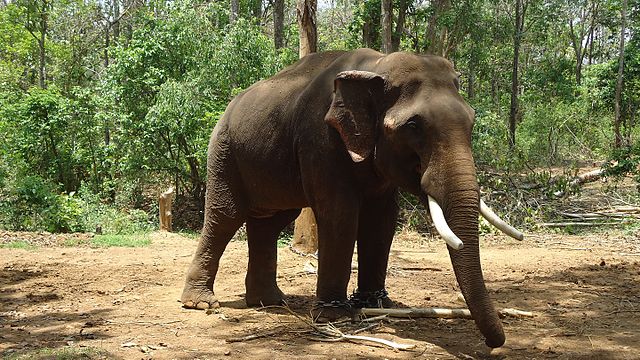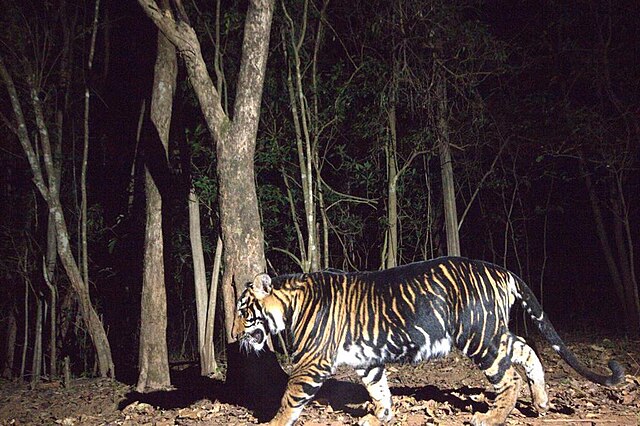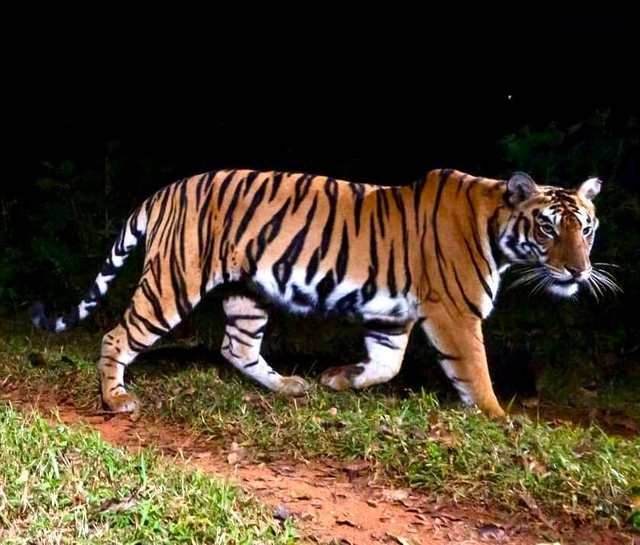Ever wondered where you can witness the rare melanistic tigers (black panthers) in their natural habitat while being surrounded by cascading waterfalls and pristine forests? Welcome to Simlipal National Park, one of India’s most underrated wildlife destinations that’s waiting to blow your mind!
What Makes Simlipal National Park Special?
Simlipal National Park isn’t just another wildlife sanctuary – it’s a complete ecosystem that tells the story of India’s incredible biodiversity. Picture this: you’re driving through dense sal forests when suddenly, a majestic tiger crosses your path, or better yet, you spot the elusive black panther that has made this park famous worldwide.
What sets Simlipal apart from other national parks is its unique distinction as both a tiger reserve and a biosphere reserve. This dual status means you’re not just visiting a park; you’re entering a UNESCO-recognized ecosystem that’s home to some of the rarest wildlife species on Earth.
The park spans an impressive 2,750 square kilometers, making it larger than Luxembourg! But size isn’t everything – it’s what’s inside that counts. From thundering waterfalls that cascade down 400-meter cliffs to tribal communities that have coexisted with nature for centuries, Simlipal offers an experience that’s both wild and culturally rich.
Location and Geography

Where Exactly is Simlipal Located?
Nestled in the Mayurbhanj district of Odisha, Simlipal National Park sits proudly in the Eastern Ghats mountain range. If you’re looking at a map, you’ll find it in the northeastern part of Odisha, bordering Jharkhand and West Bengal. This strategic location has blessed the park with diverse topography and climate conditions that support an incredible variety of life forms.
The park’s landscape is like nature’s own roller coaster – rolling hills, deep valleys, meandering streams, and dense forests create a terrain that’s both challenging and breathtakingly beautiful. The elevation ranges from 60 meters to 1,158 meters above sea level, with the highest point being Khairiburu peak.
Climate and Best Time to Visit
Simlipal experiences a tropical climate with three distinct seasons. The monsoons (June to September) transform the park into a lush green paradise, but most areas remain closed to tourists during this period. The post-monsoon season (October to February) is absolutely magical – the weather is pleasant, waterfalls are at their peak flow, and wildlife sightings are frequent.
Here’s a insider tip: visit between November and March for the best experience. The temperature hovers around 15-25°C, making it perfect for wildlife safaris and trekking. Avoid the summer months (April-May) unless you’re prepared for temperatures that can soar above 40°C!
Rich Biodiversity of Simlipal
Wildlife Sanctuary: Home to Majestic Tigers
When we talk about Simlipal’s wildlife, we’re talking about a real-life version of a nature documentary. The park is home to over 55 mammal species, and leading the pack are the magnificent Royal Bengal Tigers. With an estimated population of 28 tigers, Simlipal offers excellent chances of tiger sightings, especially during early morning and late evening safaris.
Black Panthers: The Crown Jewel
Here’s where Simlipal becomes truly special – it’s one of the few places on Earth where you can spot melanistic tigers, commonly known as black panthers. These aren’t actually a separate species but tigers with a rare genetic condition called melanism that gives them their distinctive dark coloration.
Only about 10% of Simlipal’s tiger population exhibits this rare trait, making sightings incredibly special. Imagine the thrill of spotting one of these magnificent creatures prowling through the dappled sunlight of the forest – it’s a photographer’s dream and a wildlife enthusiast’s ultimate prize!
Elephant Herds and Other Mammals
Asian elephants roam freely through Simlipal’s forests, and encountering a herd during your safari is an unforgettable experience. The park is also home to leopards, wild boars, spotted deer, sambar deer, barking deer, and the four-horned antelope.
Don’t miss keeping an eye out for the sloth bear – these shaggy creatures are excellent climbers and often spotted in the early morning hours. The park also houses gaur (Indian bison), the largest wild bovine species in the world.
Bird Paradise: Over 230 Species
Calling all bird lovers! Simlipal is a birder’s paradise with over 230 recorded bird species. From the vibrant Indian pitta to the majestic crested serpent eagle, the park’s diverse habitats support an incredible variety of avian life.
The monsoon season brings migratory birds, while residents like the Malabar pied hornbill, white-bellied sea eagle, and various species of kingfishers can be spotted year-round. Early morning safaris often reward visitors with the melodious calls of different bird species creating nature’s own symphony.
Flora: A Botanical Wonderland
Simlipal’s vegetation is predominantly tropical moist deciduous forest, dominated by sal trees that create a beautiful canopy. The forest floor is carpeted with medicinal plants – over 3,000 species of flowering plants call this park home!
During spring, the forest comes alive with blooming flowers, including several species of orchids. The park also harbors rare plants like the insectivorous pitcher plant and various fern species that thrive in the humid microclimate near waterfalls.
Stunning Waterfalls and Natural Attractions

Joranda Falls: Nature’s Masterpiece
If waterfalls could compete in beauty contests, Joranda Falls would definitely be a top contender! This multi-tiered waterfall cascades down from a height of about 150 meters, creating a spectacular sight that’s especially breathtaking during the post-monsoon period.
The trek to Joranda Falls is an adventure in itself. You’ll walk through dense forests, cross small streams, and climb rocky terrain before being rewarded with the sight of this natural wonder. The pool at the base of the falls is perfect for a refreshing dip – just imagine cooling off in pristine mountain water after a challenging trek!
Barehipani Falls: India’s Second Highest
Hold onto your hats – Barehipani Falls is the second-highest waterfall in India, plunging down from an astounding height of 399 meters! The sheer power and beauty of this waterfall will leave you speechless.
The best time to visit Barehipani is immediately after the monsoons when the water flow is at its peak. The mist created by the falling water can be felt from hundreds of meters away, and on sunny days, you might even catch sight of rainbows dancing in the spray.
Adventure Activities and Experiences
Jungle Safaris and Wildlife Photography
Safari rides in Simlipal are nothing short of thrilling adventures. The park offers jeep safaris that take you deep into the forest, increasing your chances of wildlife encounters. Professional guides accompany each safari, sharing their extensive knowledge about animal behavior and the best spots for sightings.
For photography enthusiasts, Simlipal offers incredible opportunities. The golden hour lighting filtering through the forest canopy creates perfect conditions for wildlife photography. Remember to bring a telephoto lens – you’ll want to capture those magical moments without disturbing the animals.
Trekking Trails for Adventure Enthusiasts
Simlipal offers several trekking routes that cater to different fitness levels. The trek to Khairiburu peak, the highest point in the park, is challenging but incredibly rewarding. From the summit, you’ll get panoramic views of the entire park stretching to the horizon.
The waterfall treks are particularly popular among visitors. Each trail offers a unique experience – some take you through dense forests, others along sparkling streams, and all of them lead to spectacular natural formations that make every step worthwhile.
Cultural Heritage and Tribal Communities
Indigenous Tribes and Their Traditions
Simlipal isn’t just about wildlife – it’s also home to indigenous tribal communities who have lived in harmony with nature for generations. The Santhal, Ho, and Munda tribes call this region home, and their traditional lifestyle offers fascinating insights into sustainable living.
These communities practice traditional agriculture, honey collection, and handicrafts. Their deep knowledge of the forest and its resources has been passed down through generations. Many tribal villages offer cultural tours where visitors can learn about traditional practices, enjoy local cuisine, and purchase authentic handicrafts.
The tribal festivals celebrated here are vibrant affairs filled with traditional music, dance, and rituals that honor nature. If you’re lucky enough to visit during a festival, you’ll witness a side of India that few tourists ever experience.
Planning Your Visit to Simlipal
Entry Permits and Regulations
Planning a visit to Simlipal requires some paperwork, but don’t let that discourage you! Entry permits are mandatory and can be obtained from the Forest Department offices in Baripada or online through the official Odisha Forest Department website.
The park remains closed during monsoons (June 15 to October 15) for conservation purposes and visitor safety. Safari timings are strictly regulated – morning safaris typically start at 6:00 AM and evening safaris at 3:00 PM. Remember to carry valid photo identification and follow all park rules for a safe and enjoyable experience.
Accommodation Options
Simlipal offers various accommodation options to suit different budgets and preferences. The Forest Department operates several rest houses within the park, including facilities at Lulung, Chahala, and Nawana. These accommodations offer basic amenities and the unique experience of staying inside the forest.
For more comfortable stays, nearby towns like Baripada offer hotels and guesthouses. Many visitors prefer staying at eco-resorts near the park entrance, which provide modern amenities while maintaining an authentic forest atmosphere.
How to Reach Simlipal National Park
Getting to Simlipal is an adventure that begins with reaching Baripada, the nearest major town. The closest railway station is at Rupsa, about 50 kilometers away. Bhubaneswar, the state capital, is approximately 300 kilometers from the park and has the nearest airport.
From Baripada, local buses and hired vehicles can take you to various entry points of the park. The most popular entry point is through Pithabata, which provides access to major attractions and safari routes.
Conservation Efforts and Challenges
Simlipal faces several conservation challenges, from human-wildlife conflict to climate change impacts. However, dedicated conservation efforts by the Forest Department, NGOs, and local communities are making a significant difference.
Project Tiger has been instrumental in protecting and increasing the tiger population in Simlipal. Anti-poaching measures, habitat restoration, and community involvement programs have shown positive results. The park’s biosphere reserve status also ensures international support for conservation initiatives.
One of the most significant challenges is balancing conservation with the needs of local tribal communities. Innovative programs that provide alternative livelihoods while preserving traditional knowledge are being implemented to create a sustainable model for coexistence.
Tips for Responsible Tourism
Want to make your visit to Simlipal meaningful and impactful? Here are some essential tips for responsible tourism:
Always maintain a safe distance from wildlife – use binoculars and telephoto lenses instead of getting too close. Never feed animals or litter in the park. The ecosystem is delicate, and even small actions can have significant impacts.
Support local communities by purchasing authentic handicrafts and trying local cuisine. Choose eco-friendly accommodations and tour operators who prioritize conservation. Remember, you’re a guest in this natural habitat – respect the rules and help preserve this incredible ecosystem for future generations.
Carry reusable water bottles, avoid single-use plastics, and stick to designated trails during treks. Your responsible choices today ensure that future visitors can experience the same pristine beauty that you’re witnessing.
Conclusion
Simlipal National Park is more than just a wildlife destination – it’s a journey into one of India’s most pristine ecosystems where nature, wildlife, and culture converge in perfect harmony. From the thrill of spotting rare black panthers to the serenity of cascading waterfalls, from vibrant tribal cultures to diverse flora and fauna, Simlipal offers experiences that stay with you long after you’ve returned home.
Whether you’re a wildlife enthusiast, adventure seeker, photographer, or someone simply looking to reconnect with nature, Simlipal has something magical waiting for you. The park’s commitment to conservation, combined with its incredible biodiversity, makes it a model for sustainable tourism in India.
So pack your bags, grab your camera, and prepare for an adventure that will redefine your understanding of India’s natural heritage. Simlipal National Park is calling – will you answer?
Frequently Asked Questions (FAQs)
1. What is the best time to visit Simlipal National Park for tiger sightings?
The best time for tiger sightings is between November and March, particularly during early morning (6-9 AM) and late evening (3-6 PM) safaris. During these months, tigers are more active and visible as they come out to drink water and hunt. The cooler weather also makes safari experiences more comfortable for visitors.
2. How rare are black panther sightings in Simlipal, and what increases my chances of seeing one?
Black panther (melanistic tiger) sightings are quite rare since only about 10% of Simlipal’s tiger population exhibits this trait. To increase your chances, book multiple safari slots, especially early morning ones, and visit during the peak season (December-February). Hiring experienced local guides familiar with panther territories also significantly improves your odds.
3. Are there any restrictions on photography and filming inside Simlipal National Park?
Yes, while general photography is allowed, commercial filming requires special permits from the Forest Department. Flash photography is strictly prohibited during safaris as it can disturb wildlife. Drone photography is banned throughout the park. Professional photographers should inform authorities about their equipment and purpose of visit in advance.
4. Can I visit the waterfalls during monsoon season, and is it safe?
The park remains officially closed to tourists from June 15 to October 15 during monsoon season for safety reasons. The trails become extremely slippery, rivers swell, and there’s risk of landslides. However, the waterfalls are at their most spectacular immediately after the park reopens in mid-October when water flow is still abundant.
5. What should I pack for a 3-day trip to Simlipal National Park?
Essential items include comfortable trekking shoes, lightweight cotton clothes in earth tones, a warm jacket for early morning safaris, insect repellent, sunscreen, a first aid kit, binoculars, camera with extra batteries, a flashlight, and reusable water bottles. Don’t forget to carry all required permits and identification documents for park entry.

